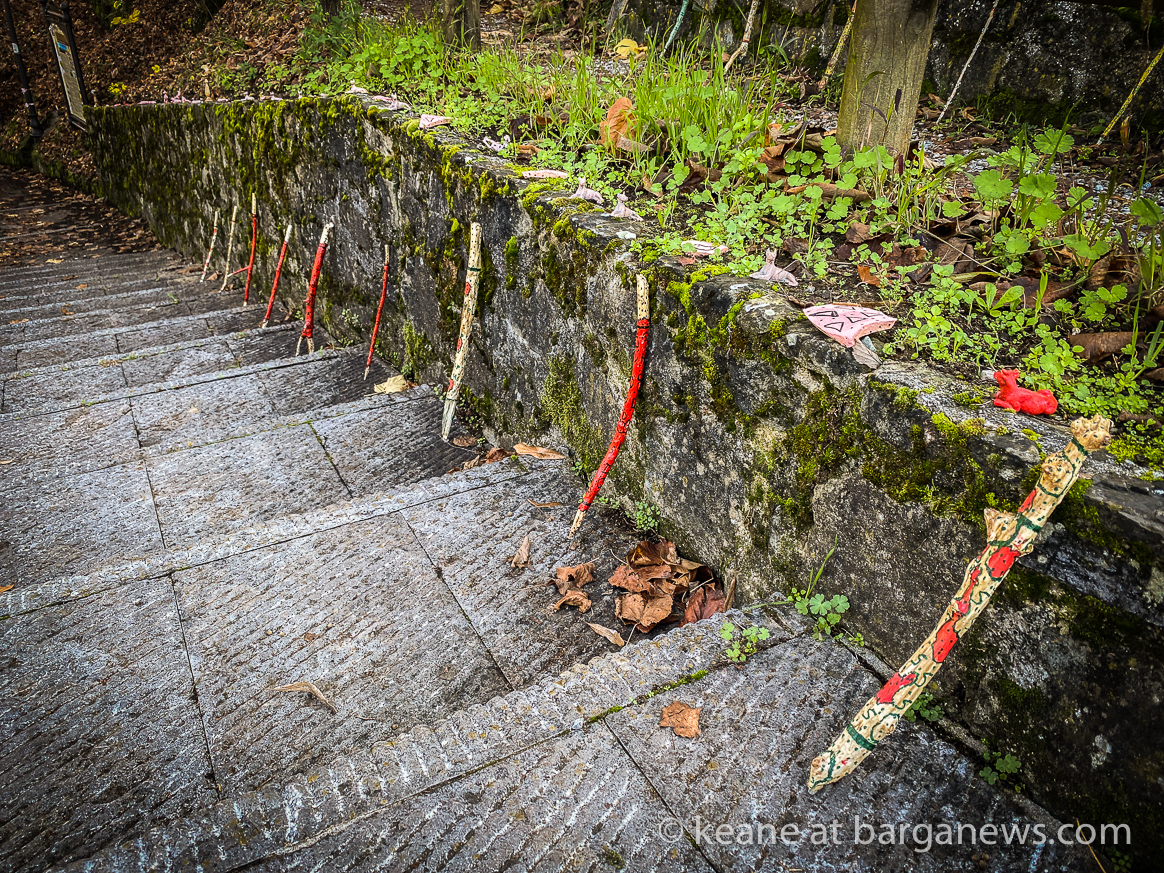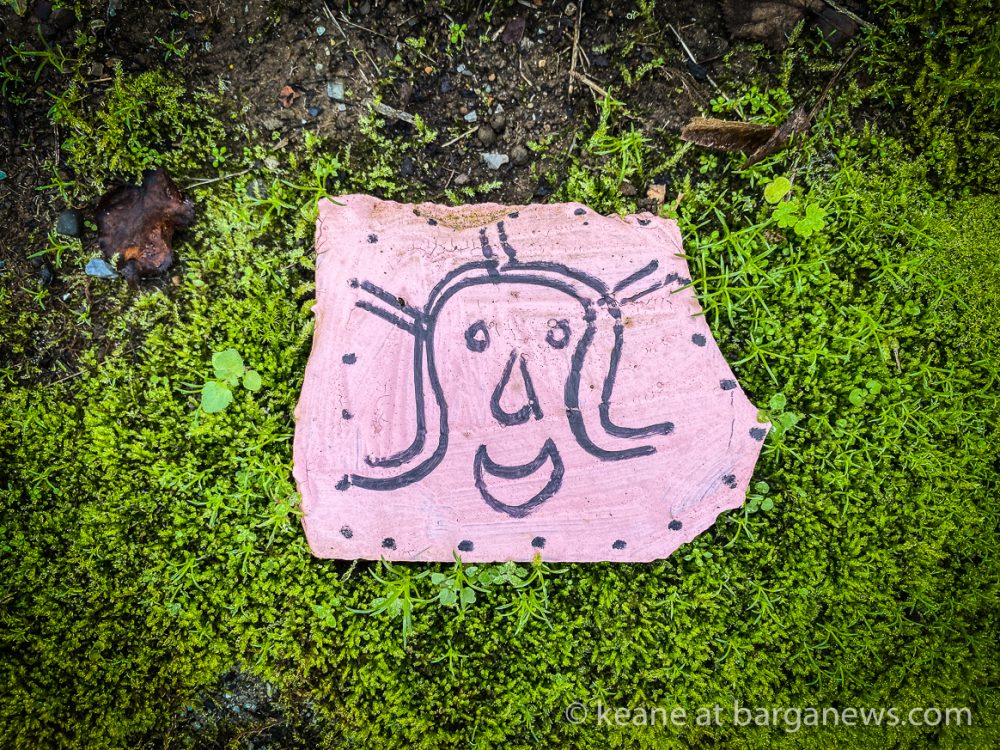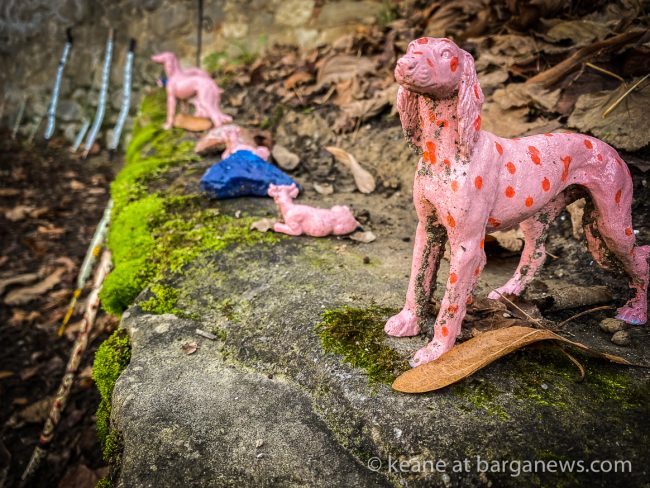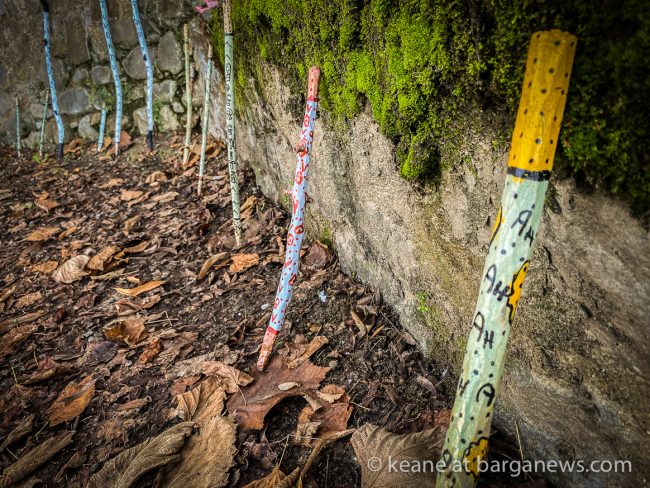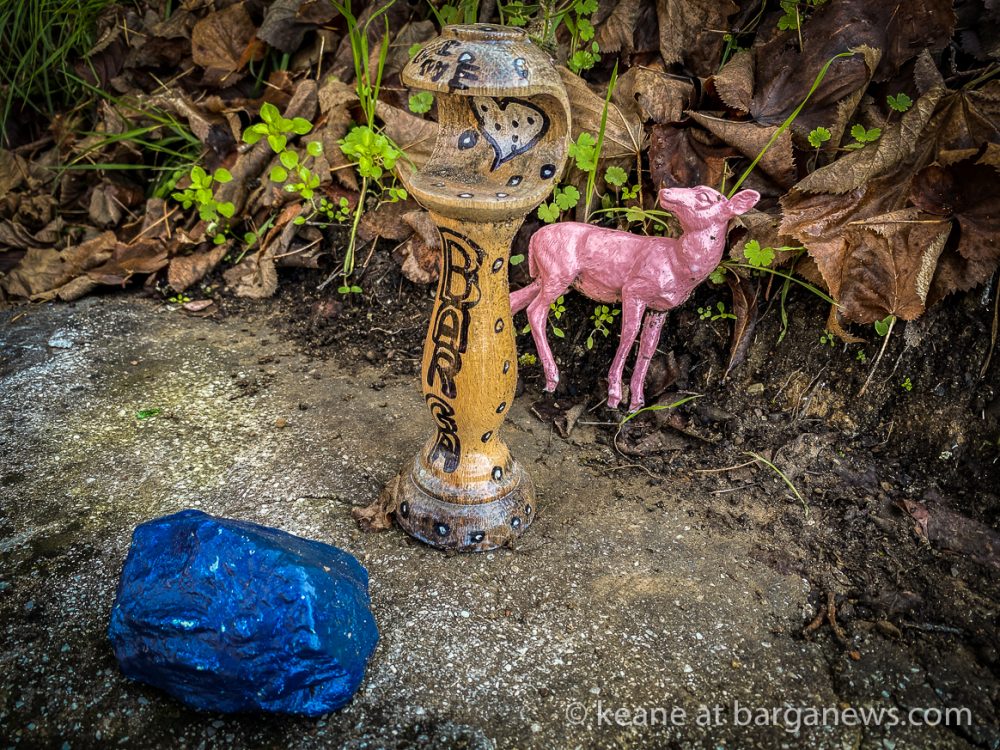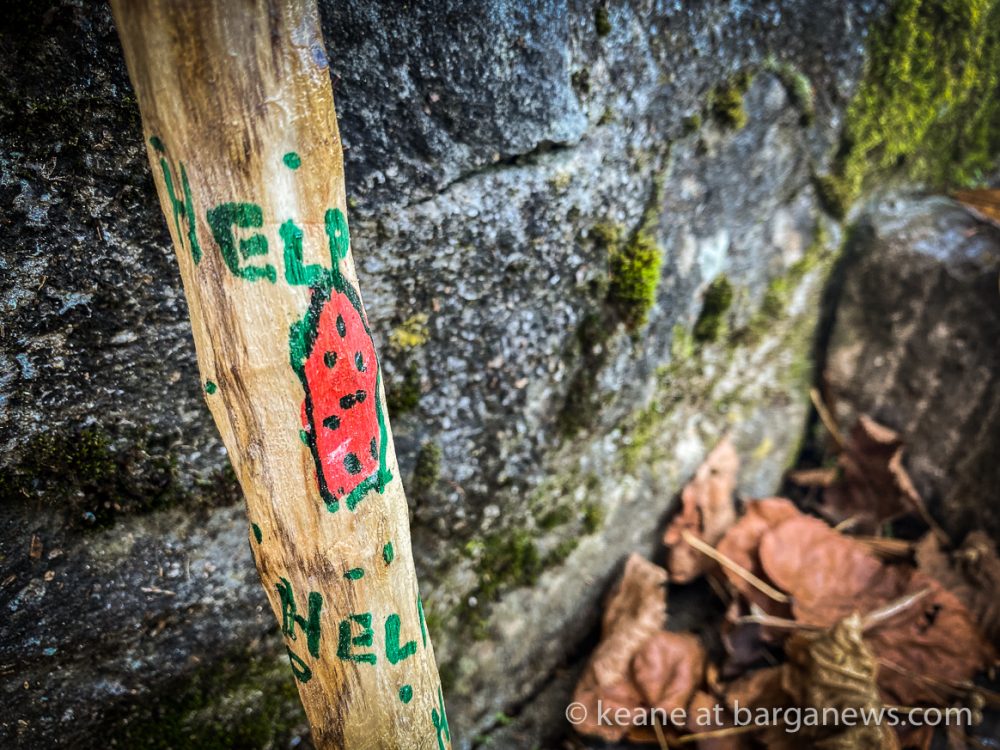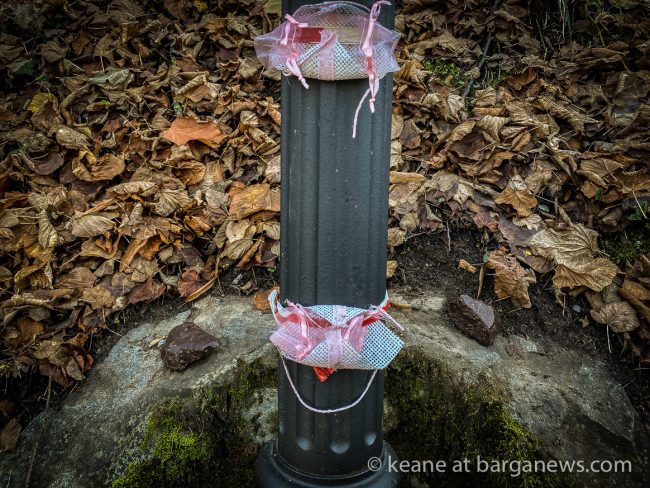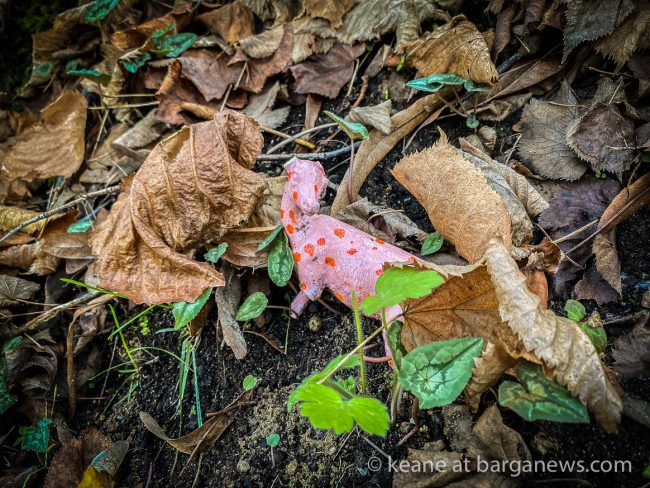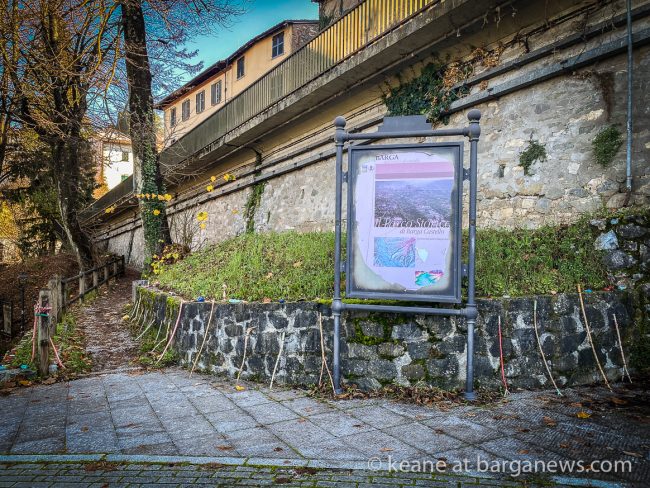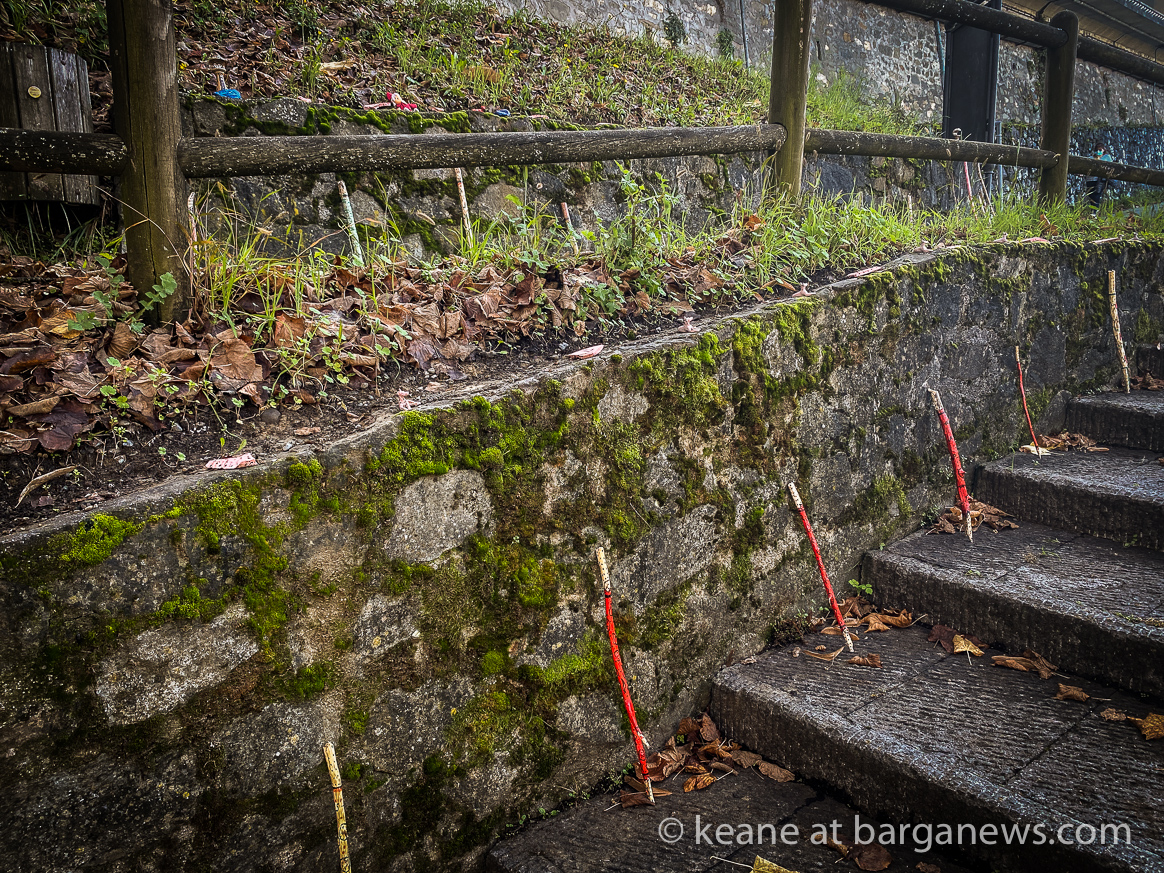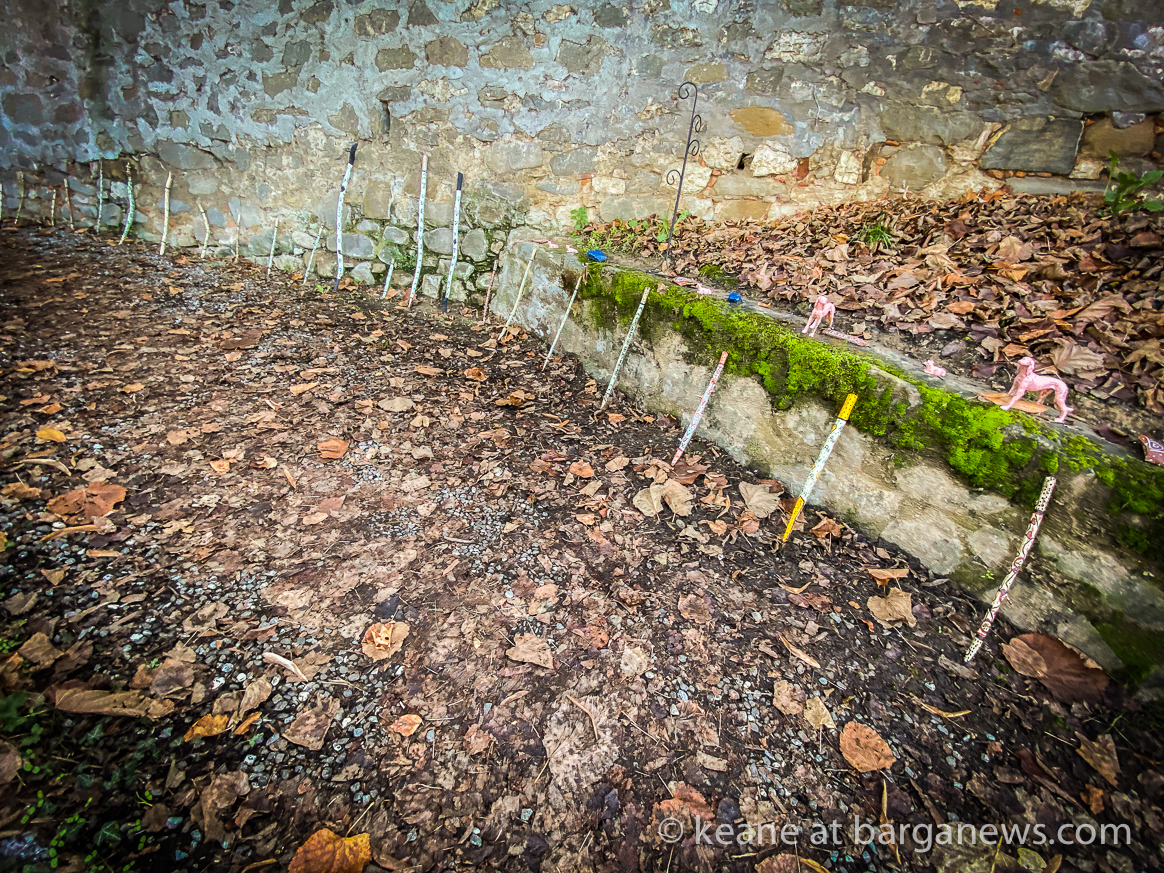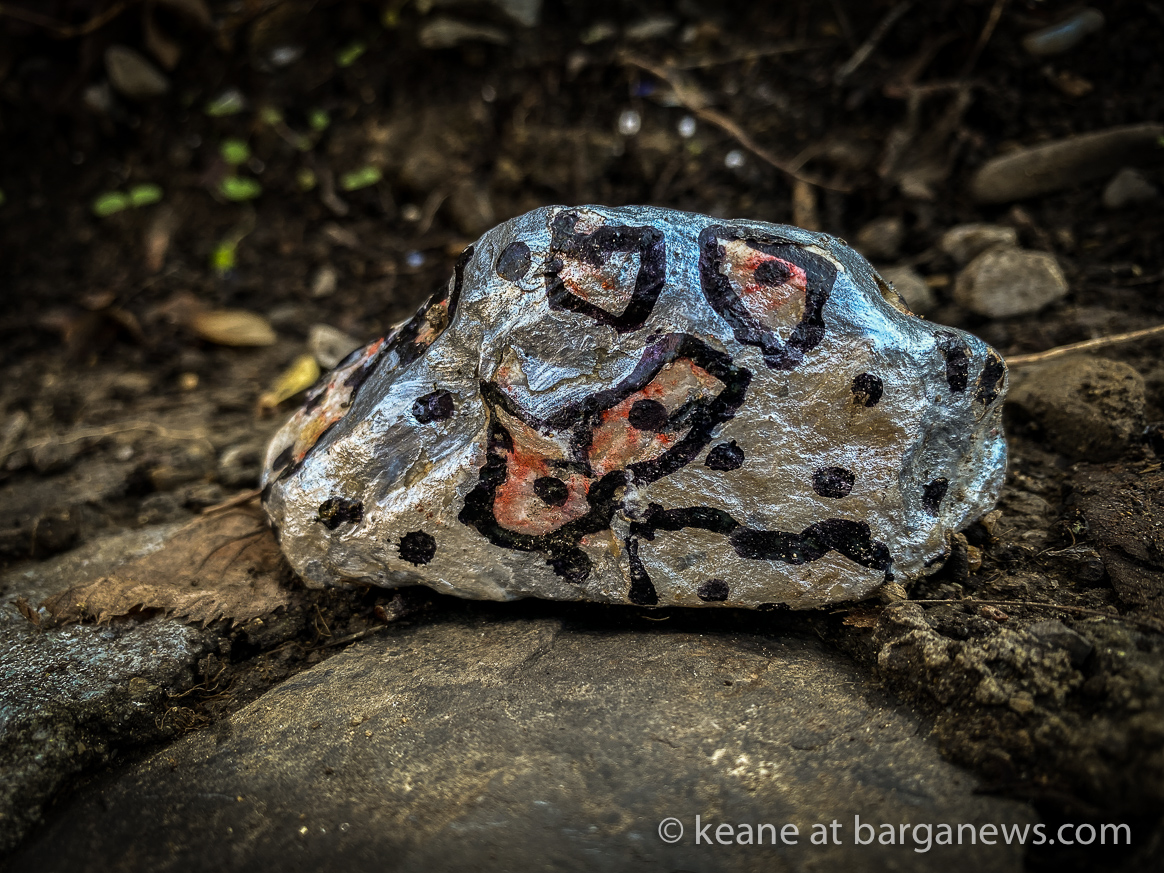Parco Buozzi – one of the more hidden places in Barga – perfect for anybody searching for some peace and quiet in the winding paths through the trees just below the walls of Barga Vecchia .
We have been publishing a series of articles for the past few months (articles here and here) concerning an unknown artist who had started an installation and which he had named “Operazione Gudrun” – a laboratory which totally and creatively recycles waste rubbish and production surplus.
Gudrun is the wife of Sigurd/Siegfried and a major figure in Germanic heroic legend and literature. She is believed to have her origins in Ildico, last wife of Attila the Hun, and two queens of the Merovingian dynasty, Brunhilda of Austrasia and Fredegund.
Beautiful hand painted sticks and painted stones are appearing in various places around the park, weeds have been pulled and rubbish has been collected and bagged up.
Who ever the person is, he or she should be applauded for adding to the cultural life of this city and making people stop and think for a moment about just what is important in this life .
The work which is now being presented to the public in the park is the near perfect definition of outsider art.
It is created and installed completely outside of the gallery system, the commercial art world and the art world in general. It is made from throwaway objects and on a more mundane level – it is not presented inside but outside in the open.
The other interesting thing is that it is “work in progress” It changes weekly or daily and so every time people pass through the park something else has changed – it creates a sense of curiosity in people to see something unexpected.
Time comes into the equation as nature changes around the work – the green of the foliage gradually disappearing, hiding some of it as the leaves fall in the autumn and then revealing more as the bareness of winter starts to arrive.
Outsider art is art by self-taught or naïve art makers. Typically, those labeled as outsider artists have little or no contact with the mainstream art world or art institutions.
In many cases, their work is discovered only after their deaths. Often, outsider art illustrates extreme mental states, unconventional ideas, or elaborate fantasy worlds.
The term outsider art was coined by art critic Roger Cardinal in 1972 as an English synonym for art brut (French:, “raw art” or “rough art”), a label created by French artist Jean Dubuffet to describe art created outside the boundaries of official culture; Dubuffet focused particularly on art by those on the outside of the established art scene.
The interest in “outsider” practices among twentieth-century artists and critics can be seen as part of a larger emphasis on the rejection of established values within the modernist art milieu.
The early part of the 20th century gave rise to Cubism and the Dada, Constructivist and Futurist movements in art, all of which involved a dramatic movement away from cultural forms of the past. Dadaist Marcel Duchamp, for example, abandoned “painterly” technique to allow chance operations a role in determining the form of his works, or simply to re-contextualize existing “readymade” objects as art.
